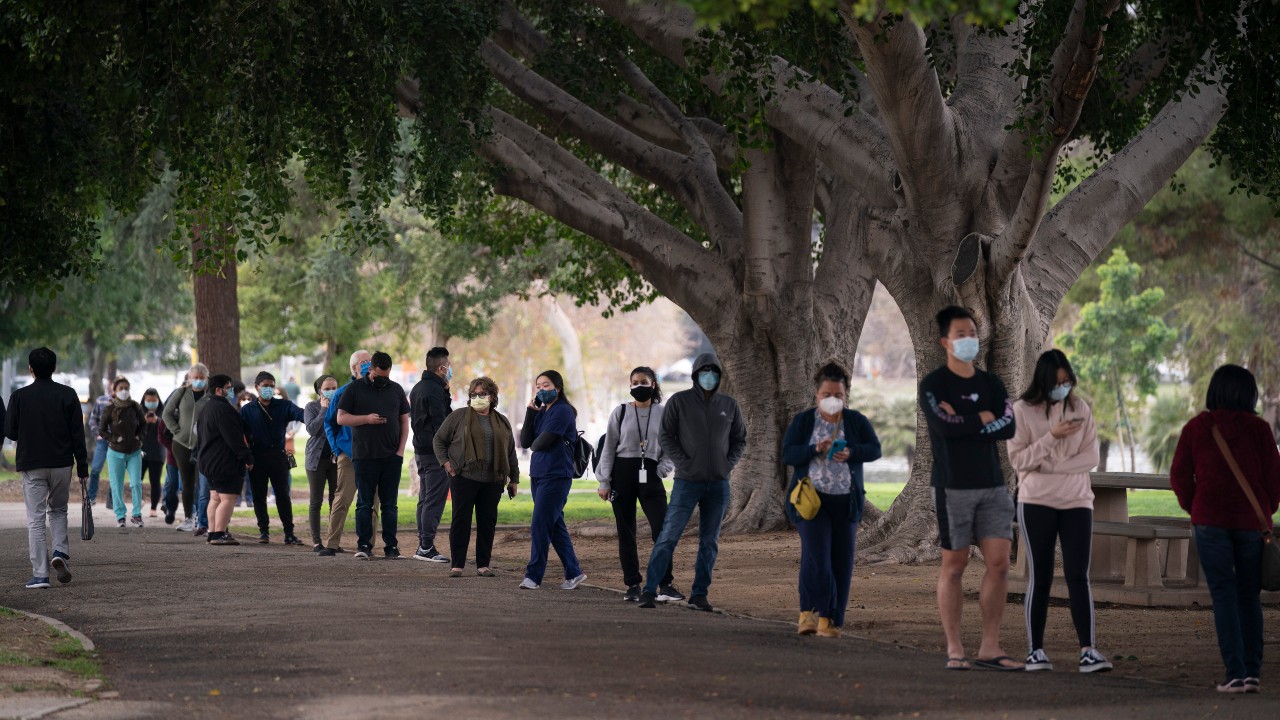
People queue for a COVID-19 vaccine in the Lincoln Heights neighborhood of Los Angeles. /Jae C. Hong/AP Photo
People queue for a COVID-19 vaccine in the Lincoln Heights neighborhood of Los Angeles. /Jae C. Hong/AP Photo
Triage is a medical term meaning the grading of patients' illnesses into degrees of urgency. Originating from the French verb trier, to sort, it first arose when Napoleon's military prioritized the treatment of the battlefield wounded, and is now widely used for many aspects of medicine in which care providers must decide who to treat first.
In that respect, even the hearteningly record-breaking rapidity of COVID-19 vaccine development hasn't eased the tough decisions which countries must make. Given a finite number of vaccinations, not to mention those who would administer them, who should we protect first?
Although it's a hugely complicated question, the answer broadly comes to a decision between two ideals. Should countries seek to protect those who are most likely to fall ill, or those who are most likely to get and spread the virus while also keeping the economy from crashing?
READ MORE
Brexit crushed my retirement dream
Engineering lessons from nature
Should we mine the seafloor?
Every pandemic is different, but COVID-19 has shown a specific ability to target those with certain (but wide-ranging) existing conditions and, most notably, the elderly.
Given Europe's ageing population, this creates a large, vulnerable group of voters, while even those outside the geriatric demographic often find it easy to sympathize with protecting the aged.
Vaccinating the workers
But there is also a strong case for vaccinating those of working age, and not just for the sake of the economy. Not everybody can work from home, and one professor put it plainly: Governments should target those "who go out of the house and all over the place and then at night come back home to their families."
That professor was Amin Soebandrio, a member of a panel who advised the Indonesian government on its vaccination prioritization. Upon receiving its first batch of jabs in January – the first three million of a promised 125 million doses of the Chinese-manufactured Sinovac – Indonesia chose to vaccinate its workers: "We are targeting those that are likely to spread the virus," explained Soebrandio.
To some Europeans this may seem a hard-nosed, emotionless decision, but Indonesia had to act fast to counter one of Asia's worst COVID-19 epidemics. It has suffered more than 1.5 million cases and 40,000 deaths.
And there was some scientific risk-reduction in play. Sinovac trials took place in different countries at different age ranges, and Indonesia's trials were only on the 18-59 age range – so that's who the government went ahead and vaccinated.
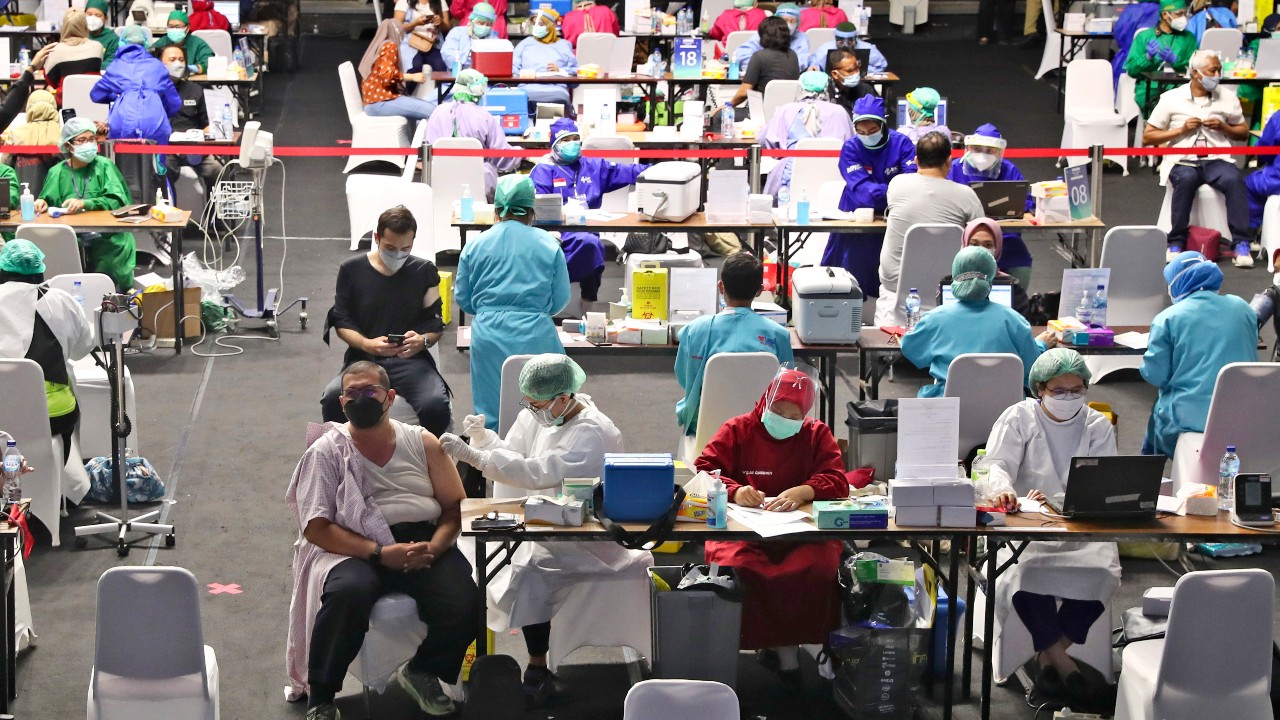
Indonesian media workers receive shots of China's Sinovac COVID-19 vaccine during a mass vaccination at a stadium in Jakarta, Indonesia, on March 16. /Tatan Syuflana/AP Photo
Indonesian media workers receive shots of China's Sinovac COVID-19 vaccine during a mass vaccination at a stadium in Jakarta, Indonesia, on March 16. /Tatan Syuflana/AP Photo
"Each country could do a different age group and Indonesia, it turned out, was asked to do the trial on the working population," said Siti Nadia Tarmizi, the Ministry of Health's spokesperson for the COVID-19 vaccination program.
Indonesia decided that older groups would get vaccinated later, with other vaccines – and as Tarmizi noted, with intergenerational living popular throughout Indonesia, "Immunizing the working members of a household will mean they are not bringing the virus into the home, where their older relatives are."
Indonesia is not alone in vaccinating the working-age population first. With relatively low rates of COVID-19 in the community, China calculated that the best way to reduce the potential damage was to immunize the workers rather than concentrate on the elderly.
Each approach has its merits, according to Zhang Wenhong, a Shanghai-based infectious disease specialist. "You can see that most people who died of COVID-19 in the U.S. and Europe are mainly people over 60 years old, so if the countries vaccinate that group of people, the death toll will be greatly reduced," Zhang said.
"Yet, in China, our duty is to prevent imported cases and the rebound of domestic cases. To prevent this, the biggest challenge is from those who are very socially active, and very easily accessible to the virus, like doctors and customs personnel. Most of these people are young."
Vaccinating the elderly (among others)
Across Europe, governments have decided to concentrate on vaccinating the vulnerable, particularly the elderly, along with frontline healthcare workers – broadly in line with World Health Organization guidance on prioritization when vaccine supply is limited. But even within this general tendency there have been differing approaches – sometimes born of political expediency.
Austria, Germany and the UK prioritized those 80 years and over before moving down through the age groups, while Estonia started with those aged at least 70 years and Sweden, which had initially targeted all adults over 18 to be vaccinated in the first half of 2021, U-turned in early February and is now focusing on those above 65. Portugal included people aged 50 years or older, but only if they have one of a short list of chronic conditions.
Some countries have prioritized key workers, and sometimes over the elderly. Slovakia's first round of vaccines went to health workers, medical students, social service home staff, members of the armed forces and some infrastructure workers, with patients over 65 and the chronically ill waiting until the second round.
Latvia vaccinated health workers treating COVID-19 patients and in emergency medical services in the top priority group. Neighboring Lithuania also prioritized those working with COVID-19 patients.
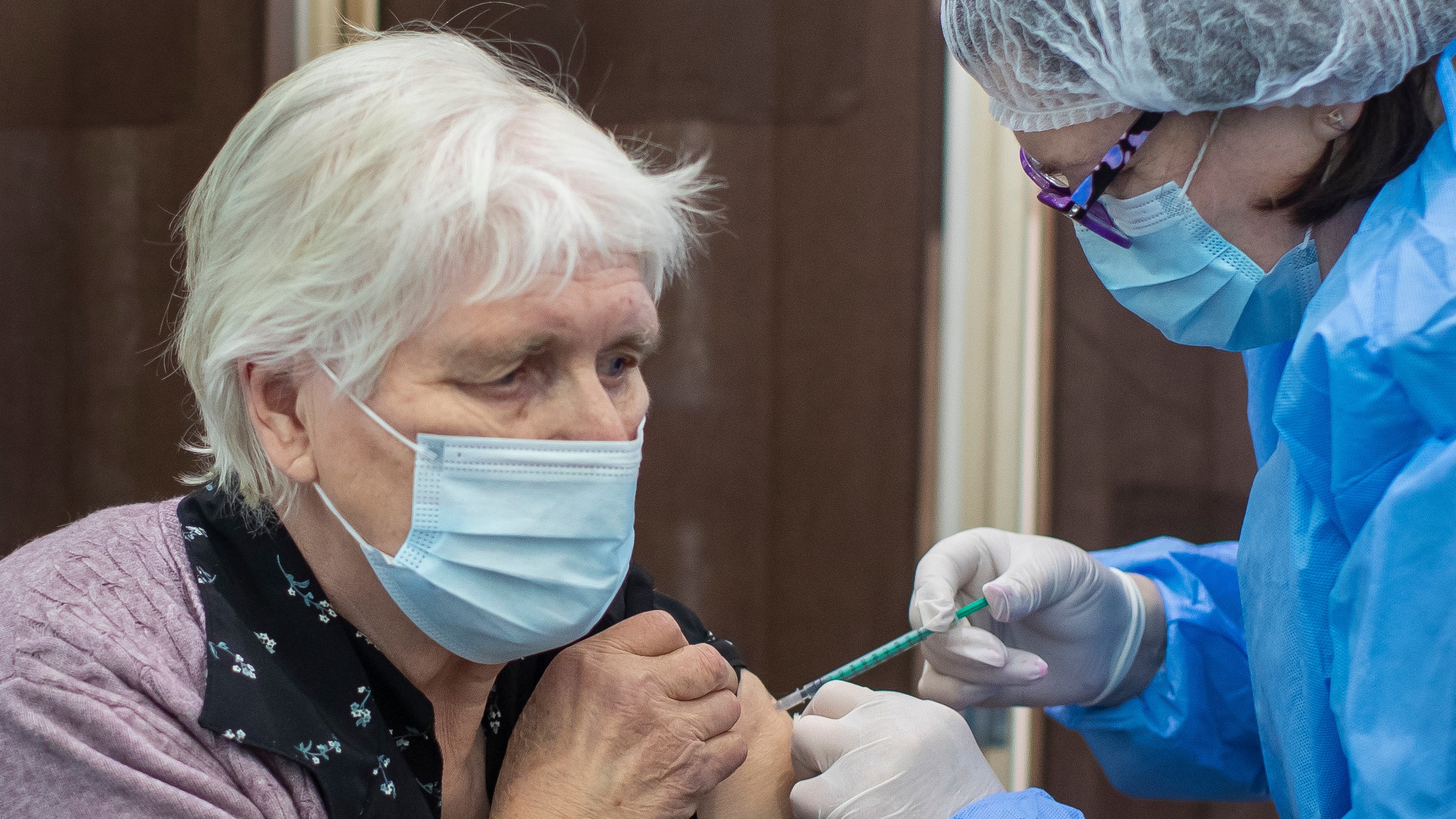
In the Lithuanian town of Utena, an elderly woman receives a Pfizer-BioNTech COVID-19 vaccine from a nurse. Deciding which of the two should get the jab first is a qud every country has to answer, /Mindaugas Kulbis/AP Photo
In the Lithuanian town of Utena, an elderly woman receives a Pfizer-BioNTech COVID-19 vaccine from a nurse. Deciding which of the two should get the jab first is a qud every country has to answer, /Mindaugas Kulbis/AP Photo
Spain focused on care home residents and employees, then frontline health workers, other healthcare personnel, and people with need for daily assistance who are not living in a care facility – before starting on the over-80s, in orders which again vary from region to region: Galicia decided to inoculate the elderly in alphabetical order starting, for some reason, with H.
In the Netherlands, the Dutch Health Council recommended a strategy targeting those aged 60 or more along with nursing home residents, frontline health workers and those suffering certain pre-existing conditions – but after lobbying from the healthcare sector, the initial priority shifted to hospital and nursing home workers over other groups, including the elderly and the medically vulnerable.
Other countries have mixed and matched, with some industry sectors prioritized. France prioritized chauffeurs and taxi drivers among others including abattoir workers and construction workers.
Age and morality
Indecision, uncertainty and the impossibility of pleasing everyone – not to mention the need to fill rolling news channels with talking heads – have combined to increase the pressure on these decisions, but not all governments have bowed to it.
In February, the UK came under public and political criticism for not including public sector workers like teachers and the police in its second-phase roll-out plans. But the UK's Joint Committee on Vaccination and Immunisation (JCVI) advised that occupation-based selection would be "more complex," risking slowing the program, and health secretary Matt Hancock reiterated that prioritizing the elderly was "the moral thing to do" and would "save the most lives."
Hancock's view is not universally held. Hugo Slim, a senior research fellow at the Blavatnik School of Government at the University of Oxford, told the Financial Times that "I know it's an unpopular thing to say, especially as a humanitarian scholar, but I don’t think we should be valuing every life equally."
READ MORE: The Answers Project Podcast: How much is a life worth?
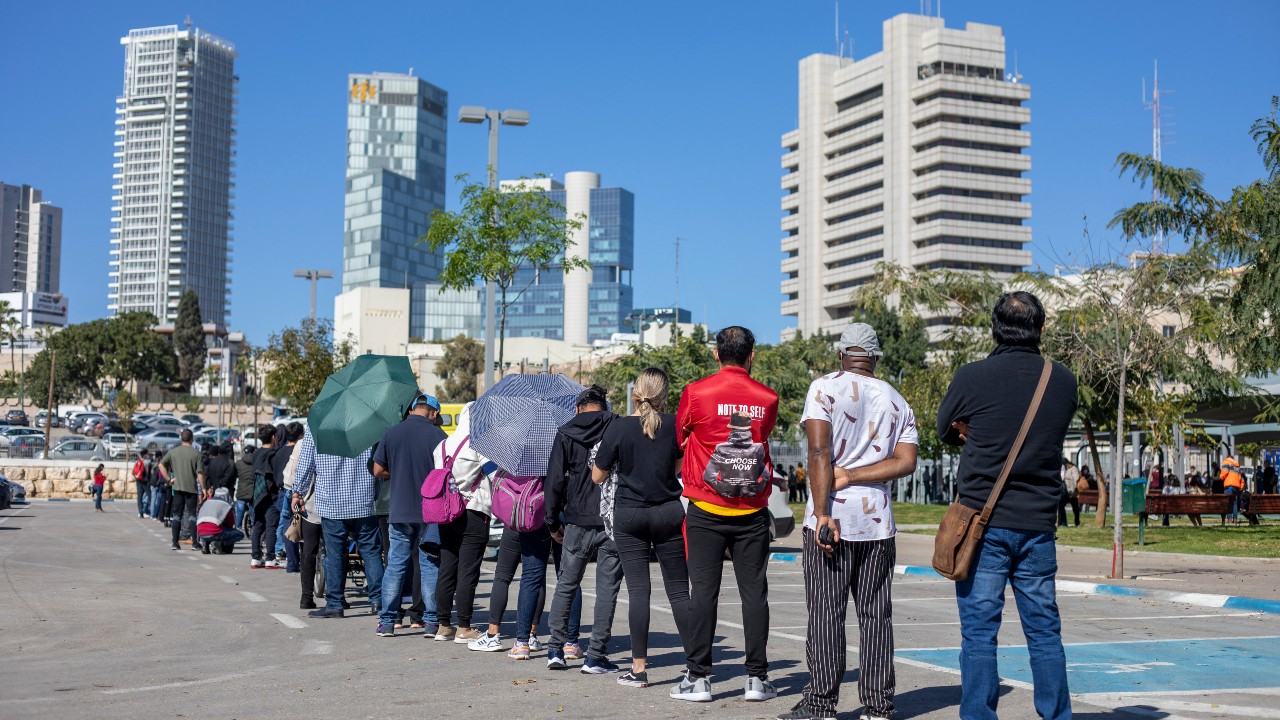
Asylum seekers and foreign workers wait for their first dose of the Pfizer-BioNTech coronavirus vaccine in Tel Aviv, Israel, on February 9. /Ariel Schalit/AP Photo
Asylum seekers and foreign workers wait for their first dose of the Pfizer-BioNTech coronavirus vaccine in Tel Aviv, Israel, on February 9. /Ariel Schalit/AP Photo
Just last week, GPs in Germany – which had cited the need to reduce pressure on intensive care beds by prioritizing people with a significantly higher risk – called for an end to the age-based selection process.
"Prioritization was and is a good guideline for doctors when only small supplies of vaccines are available," acknowledged Ulrich Weigeldt, head of the German Association of General Practitioners, but "a 69-year-old man with high blood pressure and diabetes should perhaps receive the vaccination sooner than a 72-year-old triathlete."
Ethnicity and hesitancy
Another serious consideration might be ethnicity. Research from Leicester and Nottingham universities published by The Lancet suggests black people are twice as likely to be infected as white people, and Asian people 1.5 times as likely.
It's for that reason that the U.S. Centers for Disease Control's vaccination program interim playbook included minority ethnic groups among its sectors for priority consideration, along with the over-65s, those with pre-existing conditions, the over-65s and those residing or working in care homes, prisons and psychiatric facilities.
Clearly, targeting immunizations by ethnicity would have obvious moral problems. Not only could authorities be accused of racism – with prioritized ethnicities 'stigmatized' and non-selected groups 'ignored' – but such government mandates risk worsening vaccine hesitancy among some minorities.

Somebody's got to do the dirty jobs – but if so, should they be vaccinated as a priority? /Robert F. Bukaty/AP Photo
Somebody's got to do the dirty jobs – but if so, should they be vaccinated as a priority? /Robert F. Bukaty/AP Photo
A study by YouGov last month found that while 6 percent of white Britons would refuse the jab, the figures rises to 10 percent among BAME Britons, 18 percent among Pakistani Britons and 19 percent among black Britons – with similar multiplications of those declaring themselves hesitant or unsure.
In some countries, vaccine hesitancy is already a big problem without inflaming it. A survey published in February by The Lancet indicated that 29 percent of working-age adults in France would refuse vaccination, while the other 71 percent would do so dependent on its effectiveness and country of origin.
That survey was conducted in July 2020, when Europe had reopened after what transpired to be only the first wave of COVID-19, so it's possible that attitudes have changed. However, given the bitter rows over vaccine nationalism, not to mention various countries' medical uncertainty over the AstraZeneca vaccine, it's also very possible that attitudes may have hardened among the uncertain.
The known unknowns
The world has acted quickly on COVID-19, combining with almost unimaginable collaboration and speed to produce vaccines, even if their distribution remains a sore point. But in pandemic terms, COVID-19 is still young and there is much we don't know.
One basic unknown is how much the vaccines – all of whom are different – reduce the transmissibility of the disease as well as conducting their primary purpose, which is to reduce its recipients' morbidity (catching the disease) and mortality (dying from it).
The evidence is still being assessed as large numbers of people get vaccinated.
But back in January as mass vaccination was beginning, Robert Read, a member of the UK's JCVI advisory body, said: "The reason the UK hasn't gone for the younger population, of course, is that A, they don't get such a severe disease and B, we haven't been able to demonstrate yet that the vaccines have any impact at all on transmission."
Results are now starting to emerge, if only piecemeal. In early March, a Scottish study of 300,000 National Health Service workers and their households suggested that those living with workers who had received two doses of the Pfizer-BioNTech or Oxford University-AstraZeneca vaccines were 54 percent less likely to contract COVID-19.
That's encouraging, especially considering – as the researchers point out – that the resultant percentage may have been artificially depressed by household members contracting COVID-19 elsewhere.
Elsewhere there have been studies putting the figure much higher – based on the idea that if you don't even have an asymptomatic infection, you're unlikely to pass it on, as well as studies showing that vaccinated people had lower viral loads even if infected than those who were not vaccinated.
It is a subject about which health leaders are urging caution and continuing vigilance.
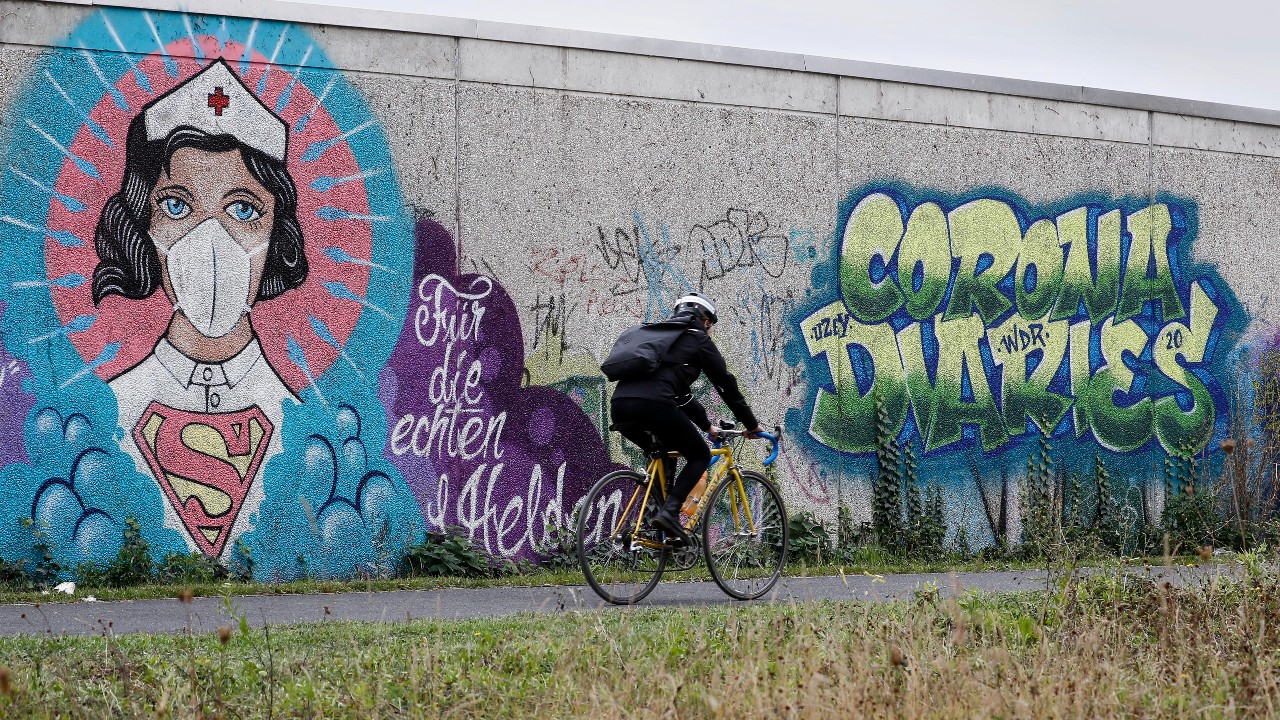
Superhero nurse graffiti in Hamm, Germany. Healthcare workers will be buoyed by promising preliminary research that their own vaccinations may be protecting their families and household members. /Martin Meissner/AP Photo
Superhero nurse graffiti in Hamm, Germany. Healthcare workers will be buoyed by promising preliminary research that their own vaccinations may be protecting their families and household members. /Martin Meissner/AP Photo
The same could be said about Long COVID-19. While research continues, the very nature of a long-term illness means conclusions will not be swiftly forthcoming – and in the meantime, most countries are looking to open up as soon as possible.
What if it turns out that in prioritizing the elderly, governments have merely opened up their working-age population to suffering lifelong illnesses which will not only reduce their economic usefulness but also weigh heavily on countries’ healthcare services for decades to come?
Such things are unknown but must remain at the forefront of government thinking in a still-shifting pandemic landscape.
The 15th-century monk and poet John Lydgate wrote that "You can please some of the people all of the time, you can please all of the people some of the time, but you can't please all of the people all of the time."
Present politicians are discovering the simple fact that whichever way they cut the cake, someone will feel left out. But that doesn't mean leaders can shy away from critical, life-changing decisions which should be rational and utilitarian rather than hierarchical and political.

